Nestled in parkland at nearly the highest point in Manhattan, overlooking the Hudson River, the Cloisters gives the impression of an ancient building, timeless in its presence and European in its soul.
It does a good job at that impression, but it's only an act. The Cloisters is actually a very carefully designed modern museum created to display the medieval art collections of the Metropolitan Museum of Art, created with funds and direction from some of New York's richest--and most eccentric.
The museum's history is almost as fascinating as the site itself. While John D. Rockefeller, the biggest donor, usually gets the bulk of the credit for creating The Cloisters, the story really starts with George Barnard, an American sculptor and flamboyant personality living in France. Always short of cash, Barnard began collecting medieval bits and pieces and selling them on to collectors.
There was plenty for him to buy, and eventually start stockpiling. Centuries of war, religious disputes and plagues left many early churches and abbeys abandoned and decayed, even forgotten. Most of what Barnard bought he bought from farmers who in some cases were happy to have the stones out of their fields, or to sell chapels they used as farm storage.
But Barnard seemed to always live at the edge of his cash, going from crisis to crisis, and eventually cutting a deal to sell his collection to Rockefeller in 1925 for about $700,000. Rockefeller bought with the aim of donating to the Met, But, obviously, a collection of that size, including hundreds of pieces of sculptures, rooms, buildings, cloisters, tombs and more couldn't just fit into the existing museum.
At the park's northeast corner, a 'medieval-style' comfort station disguises the stone steps that lead to the pathways winding to the top.
The Metropolitan Museum is located in Central Park, and there was no likelihood of giving up more of the park for buildings, Instead, Rockefeller decided to create a park to put the new collection in. He bought a 67-acre estate on a ridge in upper Manhattan for the new park and hired Frederick Law Olmsted, Jr. to design it.
He also bought several hundred acres of the Hudson Palisades across the river in New Jersey to preserve the view from New York. The park takes its name from the Revolutionary War fort that had occupied the site. Appropriately, the building atop the Palisades is a church center and retirement home for nuns.
The four cloisters that give the museum its name serve as centers for the different parts of the building. Each also contains parts of older buildings, re-used in their own lifetimes
Charles Collens was hired to design a building to accommodate the various architectural elements, most of which are from four French abbeys, in the collection, and to fit into the site. Collens told Rockefeller the building "should present a well-studied outline done in the very simplest form of stonework growing naturally out of the rocky hill-top. After looking through the books in the Boston Athenaeum ... we found a building at Monsempron in Southern France of a type which would lend itself in a very satisfactory manner to such a treatment."
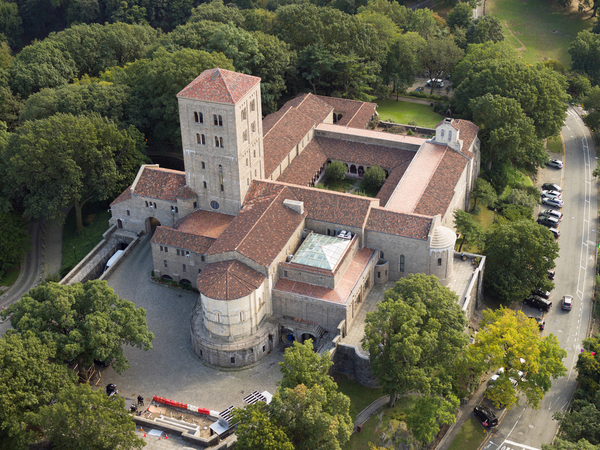
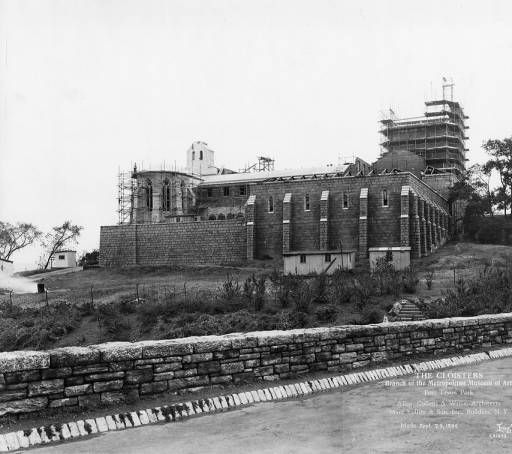
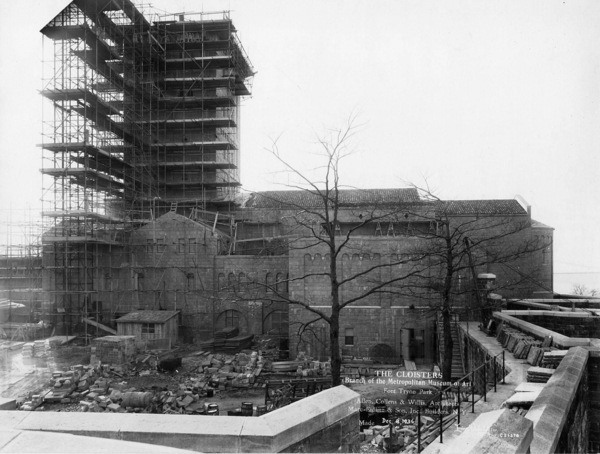
The building, whose complex shape can only really be understood from above, was built between 1934 and 1938, and opened to the public in 1939. New elements continued to be added into the 1950s, including the stunning Fuentidueña chapel. While most of the exterior walls are modern, the chapel's exterior shows its origin by its non-matching color.
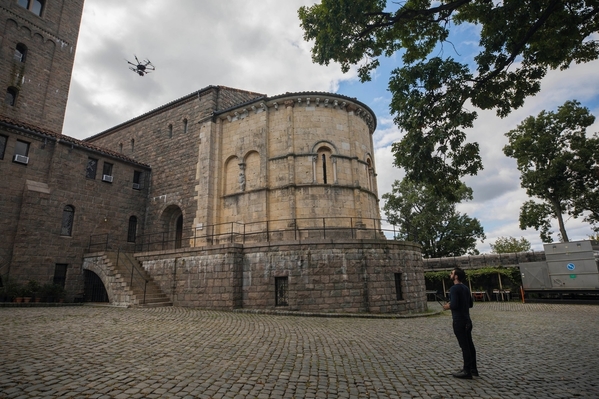
Another nearly complete space, the Chapter room where monks met daily for meditation and discussion at the 12th-century abbey at Pontaut, France. Although it is probably the room that has most nearly kept its original appearance with no other displays, George G recognized our One-Clue Mystery sight for this week. When the Met got it in 1932, it had been used as a stable.
Most of the architectural remnants came with the Barnard collection, including the four cloisters that gave the complex its name, but there are also extensive parts of the collection that came from other collectors, including Rockefeller and J.P. Morgan, who split his collection with the Met, keeping the books and manuscripts for the Morgan Library and donating the art. In the 1980s, a Treasury Room was added to show small luxury objects in the collection.
The day I visited, I asked to use the elevator from the lower to upper portions of the museum; a museum staffer came to lead me to it through the 'backstage' of facility. I got a kind of 'instant tour' of an amazing warren of workshops, laboratories, storerooms and even large lifting equipment that keeps the operation going. It was a fascinating coda to an enjoyable visits.
Next week, I'll share some of the fabulous collection.
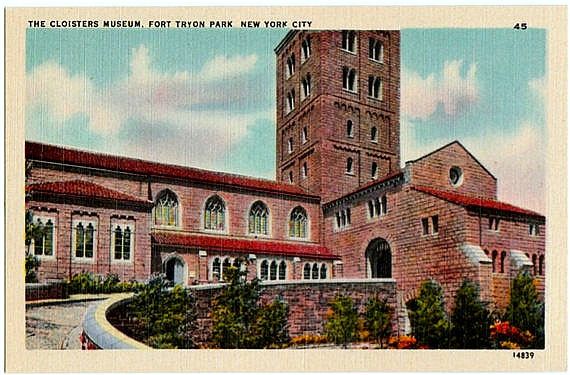
A 1930s postcard seems to have wished the building were red brick...
Doorways and other parts of older buildings are into the museum's walls, sometimes accompanied by diagrams showing what's original and what had to be reconstructed.
Outdoor spaces, including the cloisters and a terrace over the river add to the sense of moving through and around an ancient building.
Smaller examples of stained and painted glass are mounted at eye level.






Comments (0)